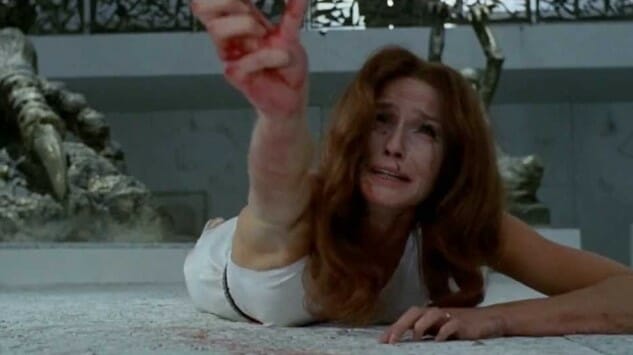The Best Horror Movie of 1970: The Bird with the Crystal Plumage

This post is part of Paste’s Century of Terror project, a countdown of the 100 best horror films of the last 100 years, culminating on Halloween. You can see the full list in the master document, which will collect each year’s individual film entry as it is posted.
The Year
The early 1970s are an odd time for horror, when it can sometimes feel like the genre is being produced in abundance, everywhere but the USA. European horror output is certainly through the roof right now, whether it’s the relentless Hammer sequels in the U.K., a steady stream of giallo from Italy, sexploitation films from Spain or the emergence of arty horror fare from Czechoslovakia. The global volume of horror cinema is rarely more robust than it is in the first half of this decade—it’s just a bit odd to see the U.S. market seemingly failing to keep up with the voracious European appetite for blood and bared breasts. Of course, things won’t stay that way for too much longer, but in this moment, Europe’s dominance of the genre is fairly pronounced.
Chief among this year’s international offerings is the fantastical, deeply confusing (but visually sumptuous) Valerie and Her Week of Wonders from Czechoslovakia, which tells an allegorical story of a 14-year-old girl’s puberty and sexual awakening, as condensed into a week filled with bizarre mistaken identities and the occasional vampire. The film defies any attempt to categorize it, existing on the periphery of horror and psychedelia—a mysterious film that is loathe to give up any of its secrets.
Vampires, indeed, are being portrayed all throughout Europe with more sex appeal than ever these days. In the U.K., The Vampire Lovers forms the first piece of what is later known as the “Karnstein Trilogy,” for Ingrid Pitt’s character Mircalla Karnstein, often referred to as cinema’s first prominent example of the “lesbian vampire” archetype. A fusion between Hammer’s gothic horror sensibilities and the kind of “women in prison” exploitation mindset that would be popular in the U.S. later in the decade, these films are unabashedly sexualized but still retain enough horror bonafides to attempt occasional scares. The same attitude is also present in this year’s not one but two Hammer Dracula sequels, Taste the Blood of Dracula and Scars of Dracula. Whereas the latter throws continuity to the wind entirely in a half-hearted reboot attempt, the former is more interesting and more odd, centering around a club of human, miscreant thrill-seekers who decide to resurrect Dracula just for the fun of it. Unsurprisingly, he then ends up killing most of them, again in a performance where Christopher Lee utters very little dialog. If you’re wondering why Lee kept accepting these roles while apparently being very reluctant to do so, the actor himself referred to the process as “emotional blackmail,” as studio executives and his agent routinely guilted the performer into accepting the jobs by saying that his refusal would be putting entire film crews out of work. Looking back on the series, it’s a shame that Lee often felt trapped in the role, but it’s also hard to think of anyone else who could have given Dracula such animal ferocity.
One final note: If you’re ever hosting a Halloween party, by all means queue up this year’s An Evening of Edgar Allen Poe, which simply features Vincent Price in a chair, narrating a bevy of Poe stories with his camp-o-meter turned up to 11. It sets the mood pretty beautifully.